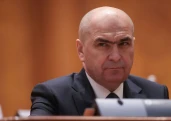Romania's working age population (aged 15 to 64) was 12.93 million in 2018, accounting for 66.2 percent of the total population, with 64.8 percent of this population being employed, 2.9 percent unemployed and 32.3 economically inactive, according to data published by the National Institute of Statistics (INS) on May 1.
According to a labour force survey, Romania's employed population comprised 8,689 million people in 2018, slightly up by 18,000 persons from the previous year.
A breakdown by age group of the employed population indicates that the highest share was held by persons aged 35-44 (28.5 percent), followed by those in the 45-54 age bracket (26.1 percent). Young people aged 15 to 24 were making up 6 percent of the economically active population.
"Analysing the distribution of the employed population according to educational attainment, we find that the highest shares were held by people with a high school education (39.9 percent), followed by those with higher education (20.5 percent) and vocational training or education graduates (17.4 percent). The share of persons with primary or secondary education was 2.7 percent."
Economic dependency as a ratio of the number of employed persons to unemployed persons and persons in the inactive population was 1,248? in 2018, down from 1,267 ? in the previous year. A higher level of this indicator was reported for women - 1,665 ? versus 932 ? for men - and for people in the countryside compared to those in urban areas, 1,303 ? to 1,203 ?.
The distribution of Romania's employed population in 2018 by type of ownership shows that the private sector absorbed 83.2 percent of the employed persons, with more than half of which over (51.0 percent) living in the urban area. The private sector was predominant in the following activities: agriculture, forestry and fishing (98.8 percent), trade (98.4 percent), construction (98.3 percent), hotels and restaurants (97.8 percent) manufacturing (97.2 percent).
The public sector comprised 15.6 percent of the employed population. Most people working in the public sector (74.3 percent) were urban, 54.7 percent were women, and 75.5 percent were working in public administration and defence, education and health, and social working. The mixed ownership sector comprised 1.2 percent of the employed.
The average weekly working time for the employed persons was 39.6 hours per week in 2018 (35.0 hours per week in agriculture, 40.5 hours in industry and construction and 40.4 hours per week in services ). The longest weekly working time was reported in construction, and hotels and restaurants - 41.1 and 41 hours per week, respectively.
The number of unemployed persons as defined according to International Labor Office (ILO) criteria was 380,000 in 2018, down 15.5 percent from the previous year.
Romania's economically active population increases slightly in 2018, to 8,689 million people
Explorează subiectul
Articole Similare

18
Gov't okays contingent of 90,000 newly admitted foreign workers on Romanian labor market in 2026
18

14
The three Romanians stuck in cable car in Italy - evacuated in good condition (ForMin Toiu)
14

13
We will have a deficit lower than the 8.4% we aimed at (PM Bolojan)
13

18
European Commission transfers Tuesday over 586 mln euros to accounts opened at National Bank of Romania
18

9
Bucharest Stock Exchange (BVB) closes higher Tuesday's trading session
9

7
Net assets of investment funds increase by 3.2% in November
7

10
HealthMin announces establishment of AP-ROBOTICS; public hospitals equipped with surgical robots,financed for purchase of consumables
10

36
City Hall of Sector 1 finances modernization of Rapid Club's sports facilities
36

16
Consumer Protection levies fines of almost 679,000 lei on business operators in tourist resorts
16

11
Deficit reduction target will only be achieved through firmness in managing public resources (analysis)
11

14
Over 151 million euros from European funds for investments in vegetable and potato sector
14

19
Romsilva: 492 fires in state forests managed by Romsilva in the 11 months,damages estimated at 2.7 million RON
19

13
Draft law on prioritisation criteria for Anghel Saligny programme published in decision-making transparency system
13



















Comentează